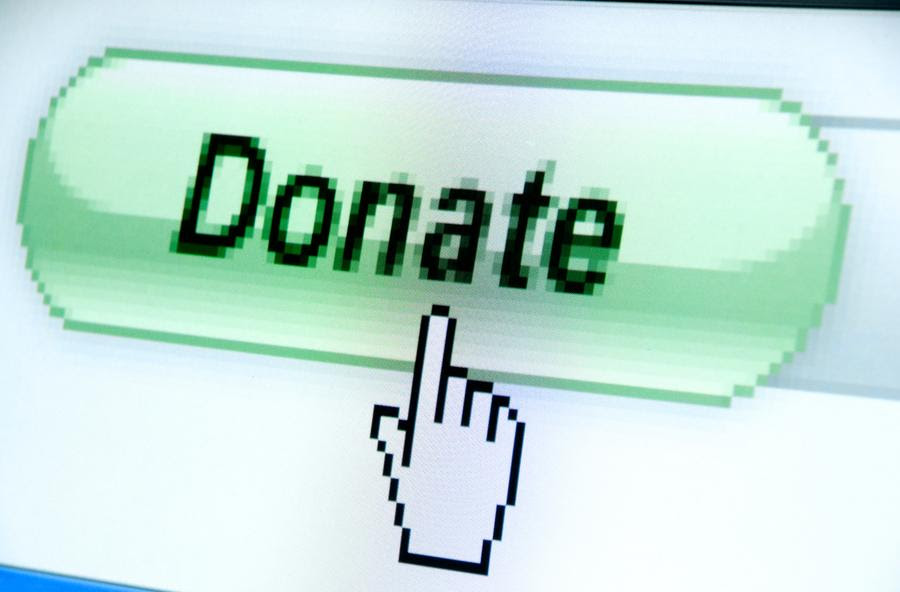
You’ll get great insight into the experiences a donor has and how they impact future giving decisions.
I’ve donated to lots of organizations over the years. Some disappoint me. Some meet my expectations. Very few wow me.
I remember the ones that wow me and the ones that piss me off. Everyone else? Can’t remember much about them. We tend not to remember the mediocre.
As a fundraiser, you need to do everything you can to give your nonprofit donors a great experience, especially one they’ll remember. A good experience reaffirms their decision to give to you. It makes them feel good about you, and that builds the trust they need to feel to want to give to you again.
The biggest problem is that your nonprofit donors won’t tell you when you’re being mediocre.
Sometimes they’ll tell you when you’ve made them mad, but mostly they’ll just go away. The better you can understand them and get inside their head, the better you can guess what they’ll enjoy and give it to them.
How to Lose Your Nonprofit Donors
I thought I’d share with you some of my own experiences as a nonprofit donor. I think there’s something for you to learn from all of them. You may have made some of these mistakes yourself. If so, recommit yourself to giving your donors a good experience.
I’ll put these in 3 categories of sure-fire ways to lose donors.
1. Don’t thank them well.
There’s nothing worse in my opinion than giving to a nonprofit then never being thanked.
I remember several years ago, I gave to an animal shelter in my area and offered to volunteer with them. I was new to the community and really excited about getting involved. I never got a thank you letter of any kind, nor did they take me up on my offer to volunteer. The next time I heard from them, they were asking for more money. Ugh. I had already given up on them and moved on to something else. Think about what they missed out on. Would you want someone like me as a volunteer? They missed out.
On another occasion (and another nonprofit), my family adopted an animal. I believe adoption is a high-water mark emotionally. Think about it – when you get a new dog or kitten, don’t you post a ton of pictures on Facebook? You tell everyone about your new family member, don’t you? Well, next thing I know, I’m getting a letter from the organization thanking me for my donation. Donation? I didn’t donate! I adopted! I was aggravated that they hadn’t booked my check correctly, and when I called them about it, they said “Oh, we use that same letter for everything.” That seemed kind of lazy to me and I didn’t really want to give to them again.
Another experience happened just a few months ago, when I attended a fundraising breakfast for a local nonprofit. It was a good event and they raised about double what they did the year before. I made a monthly commitment, then didn’t hear from them for over 6 weeks. By then, I was frustrated and couldn’t decide if they weren’t organized enough to thank me and give me an envelope for my first gift, or if it just wasn’t important. Still don’t know.

Then this happened. I attended a client event a couple of months ago and made a monthly pledge. I got a warm email the next day. Then a couple of weeks later, I got a warm, friendly (and short!) thank you letter, with a personal note on it. The envelope was hand-addressed with a live stamp on it. Plus there was a cute little insert in it that I’m tempted to leave on my desk. I like looking at it – it makes me feel good!
Do This! Most thank you letters are boring and predictable. Imagine your donor sitting across your kitchen table from you, and think about what you’d say. Write that. A conversational letter will hit the target almost every time and help the donor feel good.
2. Don’t follow up.
Make it easy for people to give. If that means you need to give them 12 envelopes to send their monthly donations in, do it. If you need to get a merchant account so you can process donations online, do it.
My husband and I were asked to make a large donation several years ago to a capital campaign for a local nonprofit we supported. We thought long and hard about it and finally committed to an amount that was a stretch for us, and committed to a quarterly payment. We received a thank you letter, then never heard another thing from the organization. No quarterly reminders. No envelopes to send the donations in. No offer to take our credit card number and automate it. Nothing. I was incredibly disappointed. As a donor dipping my toe into the major gift waters, I was excited about giving a larger than normal amount. That all fell apart when the organization failed to support us to give.
The really sad thing is that was the 2nd time I’d had that experience. I had the EXACT experience with another nonprofit several years earlier. Do people not want these gifts once they go to the trouble of asking for them? Or are they expecting donors to do all the work of remembering to pay the pledge, find their own envelope, etc? In this day and age, with people as busy as they are, you need to make it SUPER EASY for people to give. Take away any barriers to them giving.
Do This! Do whatever you have to do to make it easy for people to give. It’s about making the donor’s life easier, not necessarily yours.
3. Don’t engage them.
If you want me to give, you need to inspire me. You know what doesn’t inspire me? Your anniversary. Your goals. Your annual fund. Anything that focuses on you. As a donor, what I want to know about is the work you’re doing to change lives. How are you making a difference? What are you doing that matters?
On Giving Tuesday this year, I received a large number of emails. One asked me to give $20 in honor of the nonprofit’s 20th anniversary. Boring. I don’t care. Anniversaries are important to the people inside the organization, but not to donors. We EXPECT you to be around. Your anniversary doesn’t really change lives, so what exactly about that pulls my heartstrings?
Do This! Inspire your nonprofit donors. Tell them stories. Give them a reason to care. Tell them why they should trust you and why you need their support NOW.
Between now and the end of the year, you’ve got time to wow your nonprofit donors. You have time to inspire and motivate them. Monitor what you’re sharing and make sure it’s engaging to them. Focus on them first and you’ll be the beneficiary.






[…] numbers are in the toilet across the board. And it’s stupid in my opinion. Be thoughtful and treat donors with a lot of respect and you won’t lose so many. The problem is that so many people are so focused on money that they […]